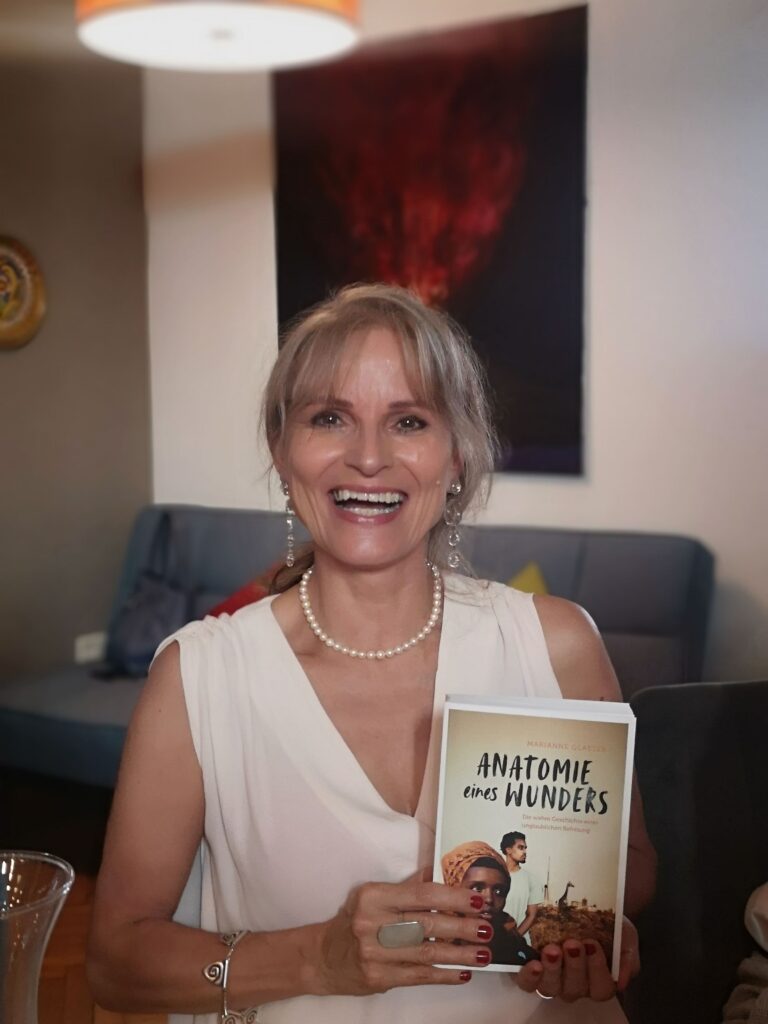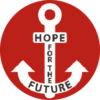The true story of an incredible liberation
An autobiography
BASED ON A TRUE STORY:
By the time she starts an internship at a counseling center for refugees in Nairobi, Marianne has already been living in East Africa for 14 years. She resides there with her husband and sons, and they work in the field of development cooperation. The prospect of attending an English university gives Marianne the opportunity to further her education in the field of psychotherapy in Nairobi. The lateral entry into this profession alone is an exciting venture. Right at the beginning, the Austrian is assigned two refugees, Hammeso and Jala, whose story gives her a shocking insight into human abysses:
Hammeso, Jala, and her husband Agadhi live in a slum area of Nairobi where they witness human trafficking. They discover a gang of traffickers who promise young Ethiopians well-paid work in South Africa, take them like animals across the border to Kenya, and abandon them without papers. Hammeso, Agadhi, and Jala are not indifferent to this fate. By way of journalistic methods, they uncover this human trafficking operation and in turn become the target of this gang of traffickers.
With a lot of luck, they escape the hitmen who were out to get them and finally end up at the UNHCR medical center. It is here that Marianne meets them six months later, both in an alarming psychological state:
they have been waiting in vain all these months for any sign of life from Jala’s husband and their young son. Repeated promises on the part of the organization to make inquiries into the whereabouts of the two prove empty. Even the promised transfer to the security center is not fulfilled, despites their lives being in danger in this unsecured center. As it will soon turn out, the neglect on the part of the organization in charge of their protection, in whose care they find themselves, does not seem to be entirely accidental…

COURAGE IS CONTAGIOUS
The harrowing story of the two heroic Ethiopians puts Marianne’s worldview and faith to the test. Above all, this incredible courage with which her two clients are willing to confront brutal injustice challenges her to confront her own fears and boldly follow her heart’s calling.
Here it becomes clear: courage is contagious. But so is fear.
“What is my part?” – an uncomfortable question that calls for empowerment.
THE WAY OF CONSCIENCE
“Anatomy of a Miracle” tells of the poverty, racism, corruption, human trafficking, and torture with which refugees are confronted. And yet, the underlying tone remains full of solace, marked by humanity, hope, and faith. Because if Marianne no longer dares to have hope, she becomes a witness and part of an unbelievable sequence of “happy coincidences”.
It becomes clear that “miracles” do not just fall into our laps, but that we can contribute to them.
“The way of conscience is the only way that leads to miracles,” Hammeso says in the book.
Marianne learns from the two refugees how important it is to follow the voice of our conscience – a voice that can demand much, even everything – as she sees in her two clients. But Marianne also experiences on her own body that even comparatively “small” steps in following our conscience can hold a lot of power and even become part of a miracle.

Thus we are at the title of the book, the “anatomy” of a miracle. After all, what do we see when we “dissect” a miracle?
In addition to the grace that underlies every miracle, these glorious events consist of a series of people who all followed their conscience and were willing to take upon themselves the inconveniences and sacrifices that this inner mission demanded. If even one of them had broken this chain, it would not have happened – this is made very clear in this book.
“Anatomy of a Miracle” is the story of two refugees, and it is also the story of Marianne, who is touched and changed by them.
“Anatomy of a Miracle” is jarring. One wants to join in the author’s cry against the injustice and discrimination experienced by refugees Hammeso and Jala, to fight along and hold their tormentors accountable. “The Path of Conscience,” which these two follow despite torture, rape, and humiliation, is as impressive as the author’s struggle to not lose faith in a good God despite all the horrors and setbacks. In reality, her faith was only deepened. A book that shows that neither a life in freedom and security nor the belief in a God that sustains life, even in hopeless situations, can be taken for granted. And quite subtly, the reader is confronted with the question: Is my own faith enduring and persevering, even in times of crisis?”
Mag.theol. Gerda Schaffelhofer, former Managing Director of the Styria Publishing Group and President of Catholic Action for many years.
Marianne Glaeser now lives in Austria and works as an online life coach with international clients.
The book is published by Fontis, Switzerland, and can be purchased in any bookstore or online book shop.
#LifeInAfrica #HumanTrafficking #Refugees #Belief #Courage #WayofConscience #Wonder #AgainstHumanTrafficking #Gegenmenschenhandel #EndExploitation #EndTrafficking #HopeForTheFuture #Austria
